WEBSITE HIGHLIGHTS: CELEBRITY DIAMONDS
The public has a never-ending fascination with celebrities. The tabloids around the check out line at your local grocery store are full of stories about the rich and famous. Part of this intrigue involves the beautiful jewels they wear and the stories behind those beautiful gems.
Click her to check out our Celebrity Diamonds section
DIAMOND SHOPPER MISTAKES: GET MOUNTING TO FIT DIAMOND
Be sure your mounting will look great with your diamond. It is certainly a good idea to shop for your mounting at the same time as you shop for your diamond, but do not make the mistake of buying a mounting that is not designed for your specific diamond.
We have clients who purchase a mounting in some jewelry store and then want to put one of our diamonds in their mounting. The jeweler told them that the mounting would fit anything from a half a carat up to two carats so they assume their 1.5-carat diamond will work fine.
The key here is that a diamond fitting is not the same as the diamond looking great in the mounting. A child’s foot will fit in an adults shoe but that does not mean it looks right or is practical for wearing every day.
Most mountings in jewelry stores are made for a one-carat diamond or less because that is the typical size their customers purchase. The pictures in the catalogs tend to be about 0.75-carat stones because that makes those mountings look nice. However, when you put a larger stone in the mounting or a different shaped stone, often the head holding the diamond towers over the ring because it has to go so high to accommodate the greater size. The result generally is a ring that looks different from the way the pictures looked or the sample ring in the store. Ask an expert if the diamond will look nice and be wearable in the mounting, not simply that it will fit, in order to avoid an expensive mistake.
PLATINUM PRICES HEADED UP
Demand for platinum among North American jewelry manufacturers is expected to continue dropping through the end of 2005, as the price of platinum is forecast to move even higher-above $1,000 an ounce-in the next 6 months, finds a new report. Platinum purchases by the North American jewelry trade are expected to fall 10 percent in 2005 to 260,000 ounces, down from the peak demand in 2000, when jewelry-manufacturing demands exceeded 360,000 ounces.
In a report released by platinum producer Johnson Matthey, the price of platinum is expected to reach $1,030 an ounce within the next six months.
Demand within the platinum market as a whole is expected to rise by 120,000 ounces to 6.71 million ounces this year, a new all-time high. However, the increased demand is coming from the auto industry, which uses the metal for platinum auto catalysts for diesel cars and trucks, and from the computer industry, which uses the metal for hard disks and LCD glass panels.
EXTRORDINARY FANCY SHAPE DIAMONDS
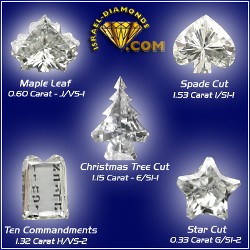 For diamond shoppers looking for something different to go under the Christmas tree this year, why not add some bling with a 1.15-carat diamond shaped Christmas tree. If the thought of a sparkling conifer is not the shape of choice, then how about a diamond shaped butterfly, dolphin or horse head?
For diamond shoppers looking for something different to go under the Christmas tree this year, why not add some bling with a 1.15-carat diamond shaped Christmas tree. If the thought of a sparkling conifer is not the shape of choice, then how about a diamond shaped butterfly, dolphin or horse head?
Israel-diamonds.com, the manufacturers behind the novelty diamond pieces, also offer a diamond in the shape of the tablets of the Ten Commandments; complete with Hebrew inscription.
The fancy diamond shapes come as loose stones or set as jewelry. Great care goes into cutting each stone to ensure these fancy shapes bring out the brilliance and sparkle of the diamonds.
DE BEERS PRICE FIXING SETTLEMENT
Beginning in 2001, several class actions were filed against various De Beers entities alleging monopoly behavior that artificially inflated the prices of rough diamonds, polished diamonds and diamond jewelry in the United States. The class actions were consolidated in the District of New Jersey Court.
On November 30, 2005, a settlement of the cases was announced. De Beers, the world’s largest diamond company, agreed to pay $250 million to settle the lawsuits alleging the company fixed the price of diamonds from 1994 to 2005.
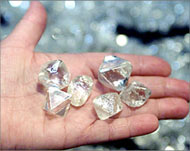 The United States accounts for 55 percent of retail diamond sales and the De Beers organization has not been able to do business in this country since the first antitrust complaints was filed in the 1940’s. From the time that Ernest Oppenheimer took control of De Beers in 1929, the company evolved into a global cartel by buying the diamond production of rival companies to control diamond prices. Using its monopoly, De Beers created an artificial scarcity of diamonds and thus kept the prices high. At its peak, De Beers sold over 80% of all unpolished diamonds internationally.
The United States accounts for 55 percent of retail diamond sales and the De Beers organization has not been able to do business in this country since the first antitrust complaints was filed in the 1940’s. From the time that Ernest Oppenheimer took control of De Beers in 1929, the company evolved into a global cartel by buying the diamond production of rival companies to control diamond prices. Using its monopoly, De Beers created an artificial scarcity of diamonds and thus kept the prices high. At its peak, De Beers sold over 80% of all unpolished diamonds internationally.
DeBeers once held huge stockpiles of diamonds that are now depleted to the point where they are down to working stock, selling diamonds that came out of the ground only three months before. In today’s diamond market, supply cannot keep up with demand and analysts are predicting decades of growth for the $75 billion a year industry.
Settlement of the lawsuits is believed to be an action by De Beers to enable them to operate directly in the United States. In 2001, De Beers launched a joint venture with LVMH (Louis Vuitton Moet Hennessy), a French luxury goods company, to establish De Beers as a retail brand.
Next month’s newsletter will continue with the De Beers retail store venture.
INCLUSIONS & BLEMISHES: FEATHER AND CAVITY
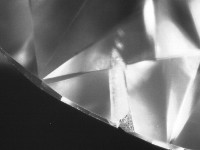 Often inclusions occur together in a diamond and this is the case for the feather and the cavity in the photo to the right. A feather is a general term for any break in a diamond. Some feathers look shiny and white, others glossy, or transparent, depending on the viewing direction. Here the feather extends to the edge of the diamond at the girdle.
Often inclusions occur together in a diamond and this is the case for the feather and the cavity in the photo to the right. A feather is a general term for any break in a diamond. Some feathers look shiny and white, others glossy, or transparent, depending on the viewing direction. Here the feather extends to the edge of the diamond at the girdle.
At the very end of the feather, a small piece of the diamond has come off, probably during the cutting process. The space left from the missing piece of diamond is the cavity inclusion. The significance of a cavity depends on the size and location of the inclusion. In this case, it is so small that is not visible to the eye and can easily be covered with a prong to conceal and protect that area on the girdle. Sometimes a cavity at the girdle like this can be felt with a fingernail even if they are not visible to the eye.
The cavity becomes a problem if 1) it is visible to the eye, 2) fills with dirt and becomes visible, or 3) makes adjoining surfaces more susceptible to breaking.
PALLADIUM JEWELRY CRAZE HITS CHINA
China this year has experienced a massive 55% increase in consumer demand for palladium jewelry, while demand for the metal from jewelry manufacturers in China will increase by 70% to 1.43 million ounces, according to a precious metals industry representative.
Palladium and platinum are both members of the platinum group of metals and often found together in ore deposits.
In many countries, palladium is a second-choice substitute for platinum and gold jewelry, but China’s growing ranks of affluent consumers view palladium as desirable in its own right. Chinese consumers tend to prize metals for their purity and high levels of palladium purity are available in China, he said.
Jewelry makers and sellers, generally welcome the trend because palladium has low price volatility and is much cheaper than platinum, making for attractive profit margins.
GEMSTONES: RUBY
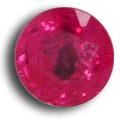 Ruby is distinguished and known by all for its fiery red color. Beside for its color, it is a most desirable gem due to its hardness, durability, luster, and rarity. Transparent rubies of large sizes are even rarer than diamonds. Transparent, flawless rubies exceed all other gems in value (except for deeply colored “fancy diamonds”). Rubies must be transparent to possess gem value. Opaque or semi-opaque rubies have little value, even if they display asterism.
Ruby is distinguished and known by all for its fiery red color. Beside for its color, it is a most desirable gem due to its hardness, durability, luster, and rarity. Transparent rubies of large sizes are even rarer than diamonds. Transparent, flawless rubies exceed all other gems in value (except for deeply colored “fancy diamonds”). Rubies must be transparent to possess gem value. Opaque or semi-opaque rubies have little value, even if they display asterism.
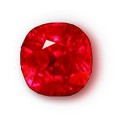 Ruby is a red variety of the mineral corundum. Sapphire, the other gem variety of corundum, encompasses all colors of corundum aside from red. In essence, ruby is a red sapphire, since ruby and sapphire are identical in all properties except for color. The color of ruby ranges from bright red to dark reddish-brown. The most preferred color is a deep blood red with a slightly bluish hue. Such ruby is known as “Burmese Ruby” or “Pigeon’s Blood Ruby”. Ruby from Burma is famous for its exceptional coloring. However, Burmese ruby rarely exceeds several carats; large flawless Burmese rubies can be worth millions of dollars. Most rubies on the market are from Thailand, and these rubies have a brownish hue. They can be heat-treated to improve color. Heat-treating a ruby can also increase its transparency by removing tiny internal flaws.
Ruby is a red variety of the mineral corundum. Sapphire, the other gem variety of corundum, encompasses all colors of corundum aside from red. In essence, ruby is a red sapphire, since ruby and sapphire are identical in all properties except for color. The color of ruby ranges from bright red to dark reddish-brown. The most preferred color is a deep blood red with a slightly bluish hue. Such ruby is known as “Burmese Ruby” or “Pigeon’s Blood Ruby”. Ruby from Burma is famous for its exceptional coloring. However, Burmese ruby rarely exceeds several carats; large flawless Burmese rubies can be worth millions of dollars. Most rubies on the market are from Thailand, and these rubies have a brownish hue. They can be heat-treated to improve color. Heat-treating a ruby can also increase its transparency by removing tiny internal flaws.
 Inclusions of tiny, slender, parallel Rutile needles in ruby cause a polished gem to exhibit asterism. Rubies displaying asterism are known as “Star Rubies”, and if transparent are highly prized. Star rubies exist in six ray stars. Very rarely, twelve ray stars also occur. Occasionally, ruby also exhibits cat’s eye effect.
Inclusions of tiny, slender, parallel Rutile needles in ruby cause a polished gem to exhibit asterism. Rubies displaying asterism are known as “Star Rubies”, and if transparent are highly prized. Star rubies exist in six ray stars. Very rarely, twelve ray stars also occur. Occasionally, ruby also exhibits cat’s eye effect.
Color zoning, which forms from growth layers that build up during the formation of the stone, is present in certain rubies.
Rubies were first synthesized in 1902. The process of creating synthetic rubies is known as the Verneuil process. Many rubies on the market are synthetic. Only experts can distinguish between natural and synthetic rubies.
